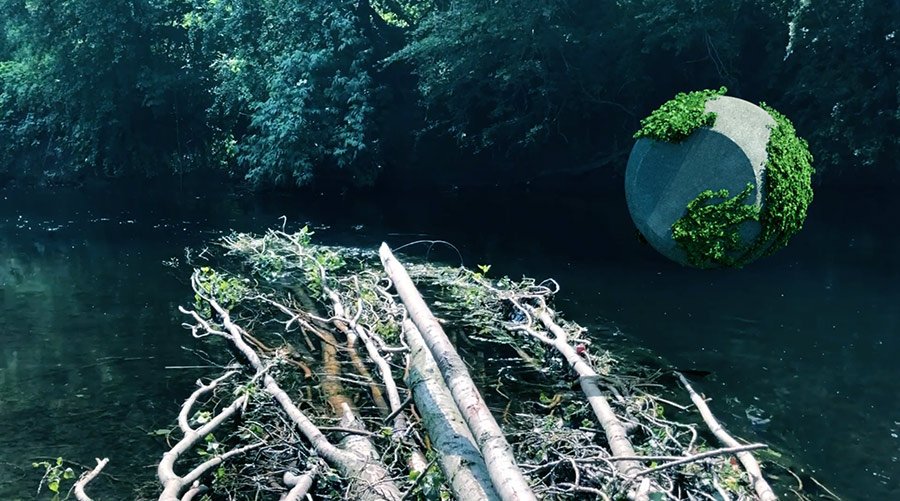Text by CLOT Magazine

Terrain is a solo exhibition presented by Studio ABOVE & BELOW. Taking place until 24th June at SET studio in Bermondsey, it explores new territories between the digital and the physical world using augmented reality and interactive interventions that reinterpret nature around us.
Founded by media artists and designers Daria Jelonek and Perry-James Sugden after graduating from the Royal College of Art in Information Experience Design, Studio ABOVE & BELOW are researching the future technological impact on our changing environment and what the future might look like between the digital and physical space. The studio believes in the rise of a new terrain between the real and virtual environment, something we have been documenting for a while (from material design to interactive experiences).
The studio focuses on interactive and immersive projects based on hands-on research at the intersection of art, design and technology. Their art and design works explore future scenarios in which emerging technologies and code can potentially improve the planet’s well-being.
We asked the founders what their relationship with this natural world, more and more blending with the digital, is: In our research, we are analysing different materials’ properties and how sustainable they are in a fast-changing environment. We use the digital world in different ways, as a catapult to make invisible changes visible (e.g. through our Augmented Reality installation) and create new digital experiences with our natural environment by letting the audience interact with a projection of changing landscapes through their body silhouette. We believe a new terrain is growing between these two worlds, and we are interested in positively shaping this emerging place.
Terrain exposes the studio’s interests and practices through different pieces: an Augmented Reality sculpture, a GCI film and interactive interventions. These different exhibition pieces aim to act together as a stimulus to discuss new interactions between humans, machines and the planet’s landscape.
Daria and Perry-James also told us that the exhibition is framed by their last year’s WIRED Creative Hack Award idea and a current year-long funded R&D by Collusion – they looked into how can we use Augmented Reality for positive interactions with our environment: Our studio’s general art and design approach is very research-based. We combine academic research with artistic mindsets to create new speculative projects that aim to develop new mindsets and discussions around technology, society and the natural surroundings.
And what do they expect of the audience that interacts with the pieces of the exhibition? They aim to dive the audience into a new terrain that has grounds between the digital and physical worlds. The atmosphere in the exhibition room is created through sound, digital and physical interactions and visual stimuli, aiming to make the audience think differently about the merging process of analogue and digital materials, places and technologies in our surroundings.
Will humankind design a new society for an Augmented Reality sphere? Can high-quality computer-generated images replace missing bits between nature and technology? What role does materiality play in the in-between space? These are some of the questions they want us to reflect on after visiting the exhibition. What will be your take?






